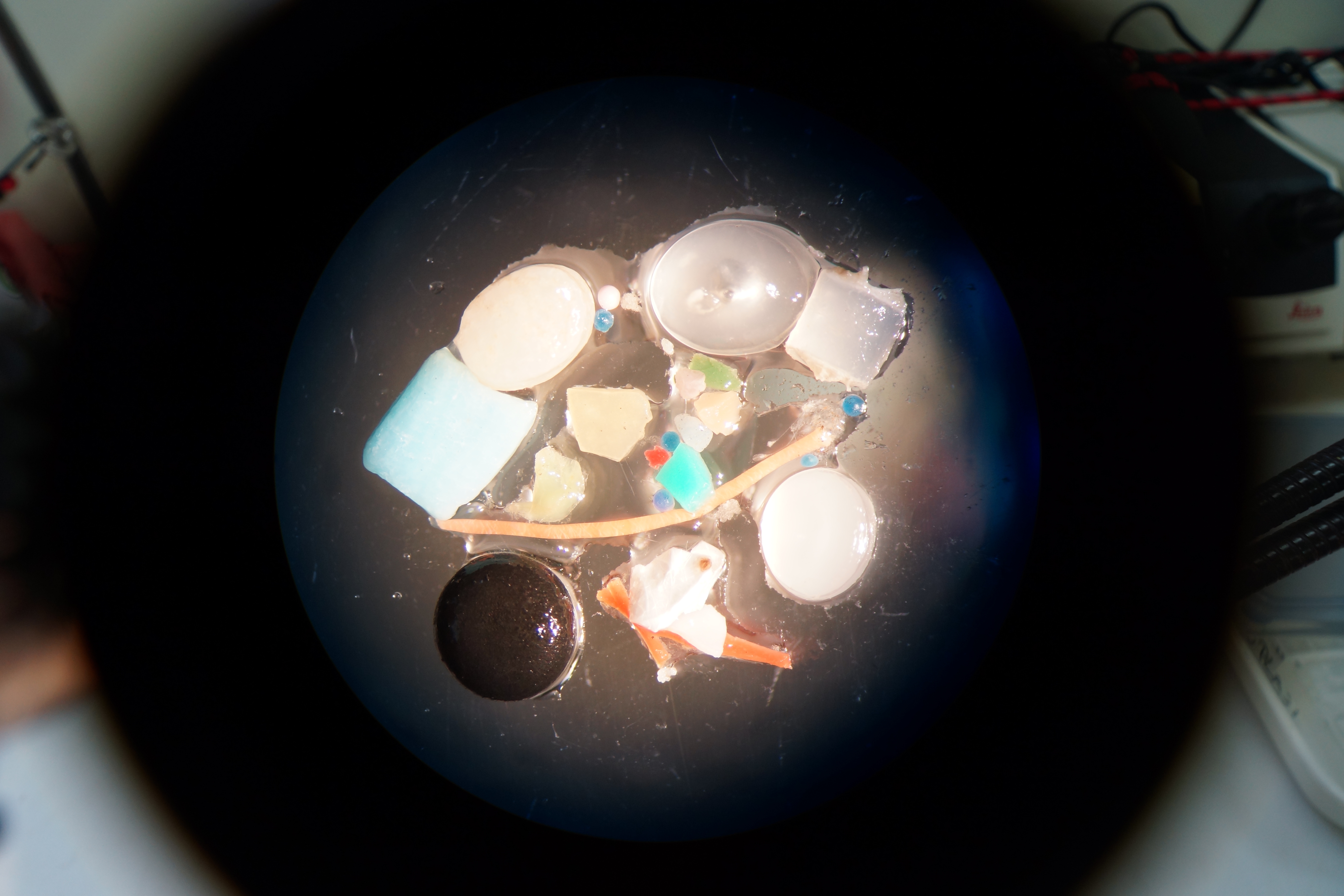How Arctic nations can help stop plastic marine pollution at its source
A ban on single-use plastics coupled with research funding into alternatives would help nations that contribute plastic pollution to change course.

There are more pieces of plastic in the ocean than stars in the sky. And there are lots of stars in the sky. To be exact, there are one hundred thousand million stars in the sky. A 1 with 11 zeros.
In recent years, the Arctic has become a dead end for ocean plastics carried there by currents. While considerable amounts of plastic enter the water locally, much of the plastics in the Arctic are carried there by sea currents from all over the world. This year scientists have recorded record levels of plastic in the Arctic. Plastic is permeating the water, is trapped in the ice, and covering the Arctic’s not-so-pristine-anymore beaches.
This is threatening the Arctic’s marine environment and wildlife. Many sea animals, including seabirds, confuse plastic for food and die of plastic ingestion. Plastic never breaks down. It just breaks up into smaller pieces. These so-called microplastics are already entering our food chain, and can already be found in fish, salt, and other everyday food items. The long-term effects of microplastics are still unknown — but could potentially be disastrous.
Recently, an ambitious clean-up project, called The Ocean Cleanup wants to remove trash from the Pacific Garbage Patch, an island of garbage in the middle of the Pacific Ocean. Unfortunately, these are not only very expensive but also tackle no more than 0.5 percent of the amount of plastic entering the ocean every year. Eight million tons of plastic enters the ocean every year. That’s as much as the weight of 60,000 blue whales. Vastly more plastic is already in the ocean and dissolved into unrecoverable microplastics. Getting plastic out of the ocean is unlikely to be effective. Instead we need to turn off the tap on ocean plastic.
How can the Arctic help turn off a tap on global plastics? A ban on single use plastics such as cutlery, packaging, plastic bottles along with funding for research and development into compostable packaging methods could do the job. Why?
A ban would vastly reduce local plastic pollution in Arctic countries. More than half of the uses of plastic are stupid uses — disposable cups, plates and cutlery, single-use packaging. Humans can do without that — in fact we have done so until recently. This would reduce the amount of local trash pollution.
A ban, along with funding for research and development, would force companies to innovate and find alternatives to plastic. We use plastics because it is such a formidable material: It is at once sturdy but also light. It is cheap, and can be used in a myriad of ways. Yet, this doesn’t mean that it cannot be replaced by an alternative. An Icelandic student invented a water bottle made out of algae. Other companies are using corn, algae and other materials to create cups, plastic bags and edible cutlery. When Germany subsidized solar panels, it led to sizeable increases in renewable energy in Germany. But what’s more than that, it led to so much innovation in the field that solar energy is now competitive and even cheaper than many traditional forms of energy. The same can happen with compostable packaging. Banning single use plastics and encouraging research into compostable alternatives can help find cheap alternatives to plastic. Once they are cheap enough, they can compete with plastics and replace it in countries such as Indonesia and India that contribute large amounts of marine pollution. This is the only way to stop plastic waste at the source.
A ban would also make it easier for other countries to impose bans. We are already seeing bans on single use plastics from the EU to Maharashtra, India to Costa Rica. Arctic countries would set both a political example, and show that it can be done and is being done. Furthermore, the more countries ban single use plastics, the easier it will be to convince your industry and constituents that this is indeed doable.
Sounds like it can never be done? Well, if much poorer countries like India and Costa Rica can do it, then countries like Norway which is a whopping 28 times as rich as Maharashtra should be able to do this, too. The funding for plastic alternatives can help deal with the backlash from companies. Moreover, the EU’s ban on a number of single use plastics, creates the perfect base for a stricter ban.
Arctic countries can go from being the dumping ground of plastics to being a breeding ground for innovations and compostable packaging. Let’s not let political inertia and our attachment to the plastic straw stop us from getting there. There is little time left. If we want to have any hope of there being more fish in the sea than plastic by 2050, drastic measures need to be taken.
Jane von Rabenau is pursuing a master’s degree in international development at the Harvard Kennedy School.

The views expressed here are the writer’s and are not necessarily endorsed by the Arctic Initiative or ArcticToday, which welcomes a broad range of viewpoints. To submit a piece for consideration, email commentary (at) arctictoday.com.